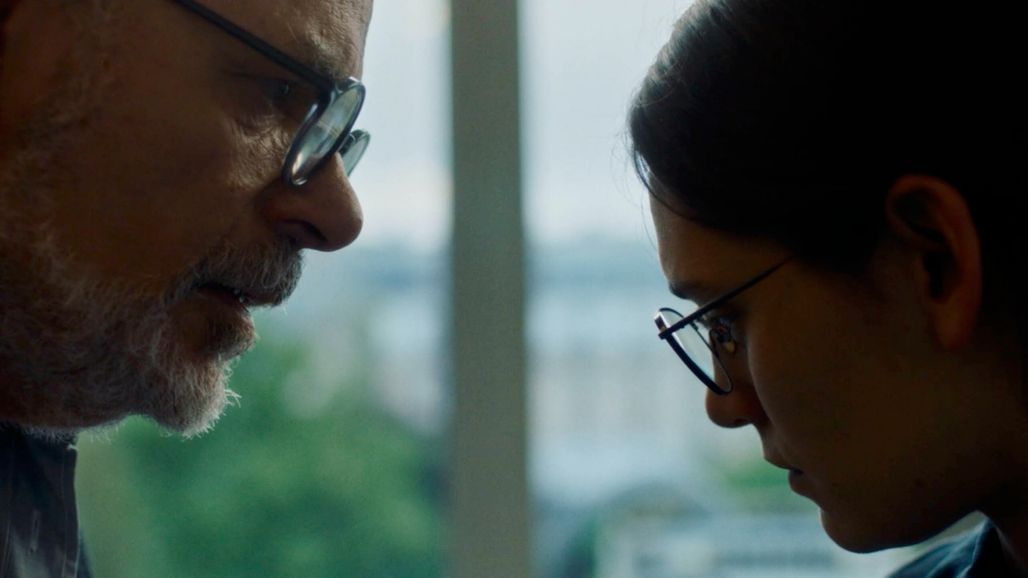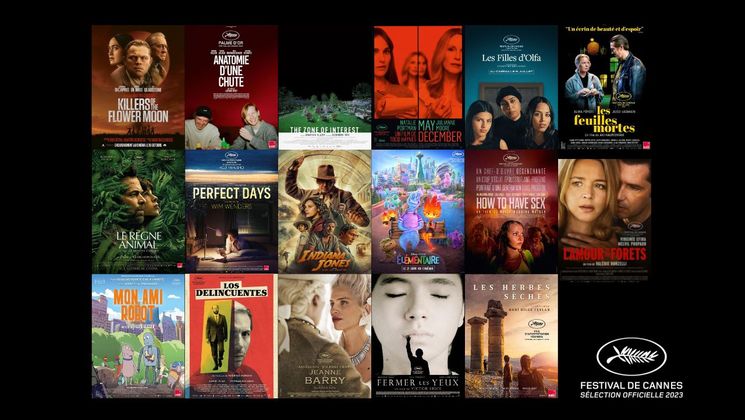
Le Théorème de Marguerite (Marguerite’s Theorem), the weight of research as seen by Anna Novion

Marguerite’s future, a brilliant mathematics student, seems already mapped out. But on the day of her thesis defence, an error upends all of her certainties and the edifice collapses. Dans Le Théorème de Marguerite (Marguerite’s Theorem), Anna Novion evokes the burden that weighs on the shoulders of women who are immersed in a masculine world.
What is the starting point of your feature film?
I remember a period when I was seriously ill. I had to stay home for a long time to get better. I was around 20 and remember being isolated from the world. When I had recovered, I felt that a distance had been created with the carefree attitude of young people of my age. When I start writing a feature film, I always rely on an emotion I’ve felt and the idea is to transpose it. The atmosphere of elite schools and the way students live in a vacuum, devoted to their work, seemed a good way of talking about this isolation.
Why did you choose to focus on the world of mathematics?
I first met with literary scholars from elite institutions. But they didn’t strike me as all that isolated. On the contrary, they were rather open to the world. I found mathematics students far more inspiring. And then there was my encounter with Ariane Mézard, which was decisive. She’s one of the rare French women mathematicians andthe two of us really hit it off. The way she presented mathematics to me really provoked something within me. She discussed it in a really artistic way. She spoke to me of everything that animates me in my profession.
Which is?
Passion, necessity, difficulty, tenacity, relentlessness… I realized that there was a real parallel to be drawn between mathematics and artistic creation. What connects mathematics and directing is the risk and the passion that sometimes leads us to work for years without knowing if our work is going to amount to anything. It’s a very personal film that evokes my relationship to creation. I also wanted to talk about what it’s like to be a woman in a masculine milieu. I felt this pressure connected to the fact of being a sort of exception that pushes us to have to prove that we belong. Marguerite, my character, considers herself as a kind of anomaly. She feels this competition all the more so as she is the only woman.
“It’s a very personal film that evokes my relationship to creation.“
How did you prepare for the film?
I spent four months at the École Normale Supérieure school meeting with mathematicians. I didn’t want them to say that I had just skimmed over the subject. With this ambition: how to make mathematicians at work captivating on the screen when you’re not from this world. The idea was to show to what point doing mathematics means working all the time.
How did you collaborate with Ella Rumpf?
She worked four hours a week over four months with Ariane Mézard. We quickly realized that it was useless for her to have the mathematics that she was going to write explained to her. She thus learned the formulas by heart. We needed it to appear extremely natural on the screen. It’s an American-style role, where we worked a lot on the posture of the character: her way of walking, her way of expressing herself, the speed of her speech and the singularity of her gaze on others.
Visually, light floods the crescendo of the film. Can you explain this aesthetic choice?
The character goes through many stages on the way to her flourishing. There are also several stages in the light and in the framing of shots. Her life is very structured at the beginning, so the shots are rather geometric and monochromatic. And little by little, with the irrational in her life that she’s going to discover, including the world of feelings, light and colour appear.


